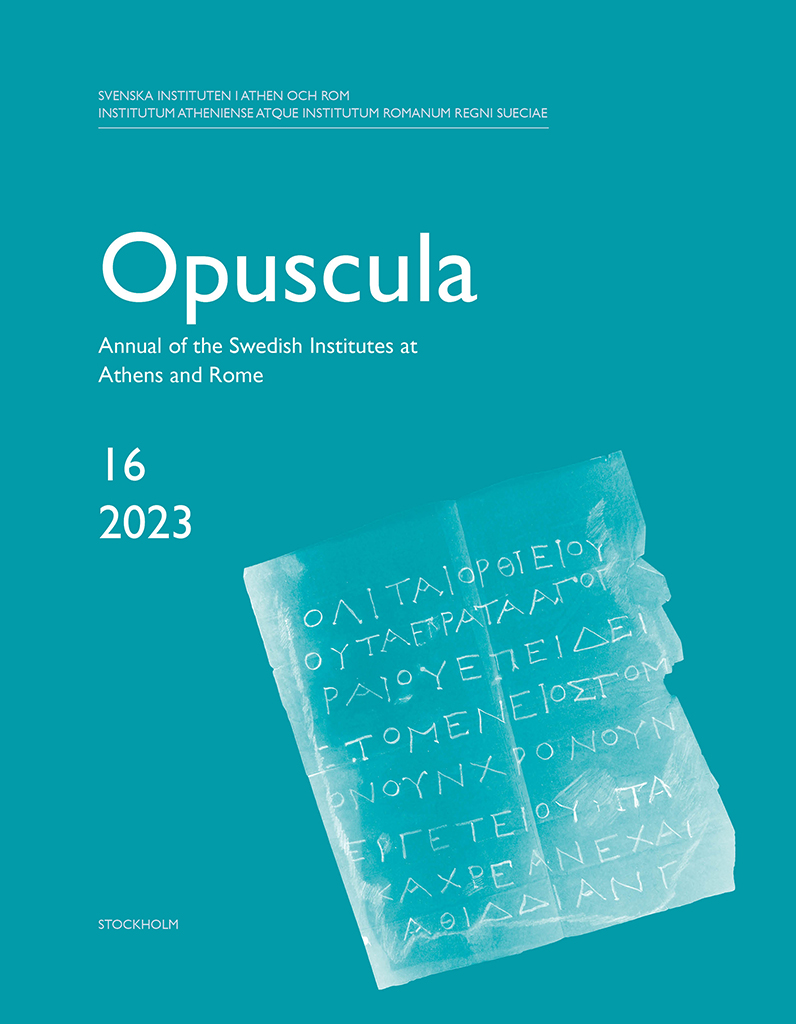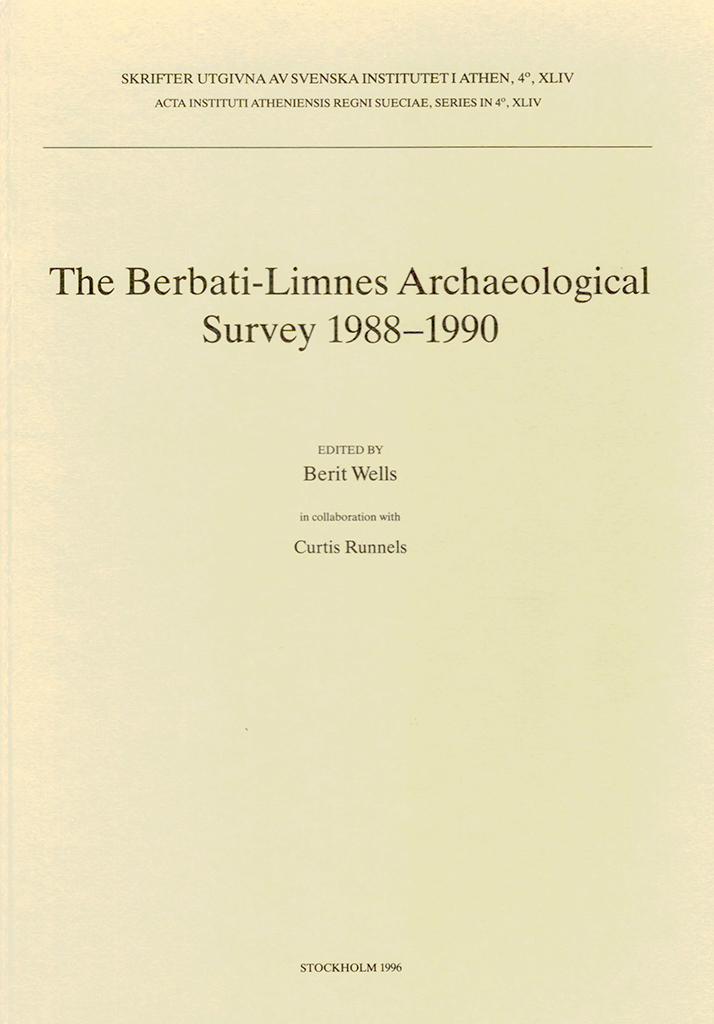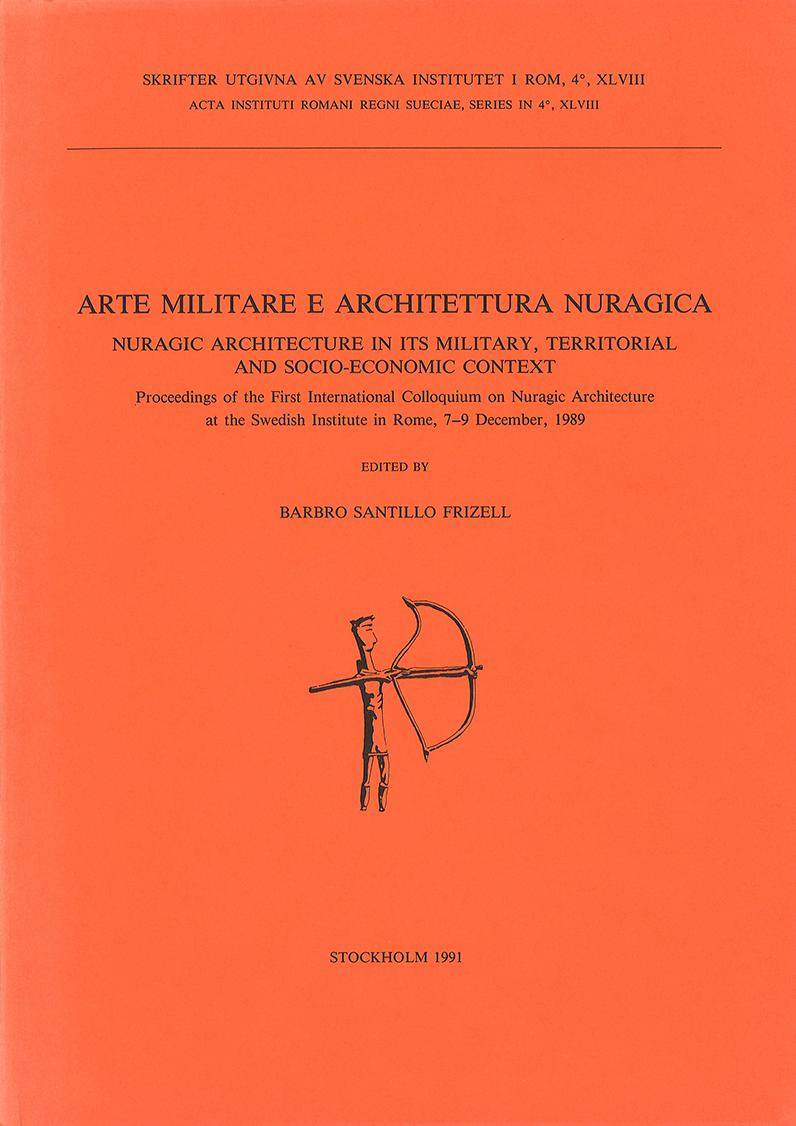Opuscula 16 is published by the Swedish Institutes at Athens and Rome. Distributed by Eddy.se AB. View volume at ERIH PLUS. All content available with open access. The Palamas Archaeological Project. A preliminary report of the 2022 fieldwork conducted by the ongoing Greek–Swedish archaeological field programme in Palamas, region of Karditsa, Thessaly By Maria Vaïopoulou, Robin Rönnlund, Fotini Tsiouka, Johan Klange, Derek Pitman, Rich Potter, Ian Randall, Harry Manley, Elisabet Schager, Sotiria Dandou & Lewis Webb Abstract This paper presents the preliminary results from the 2022 fieldwork of the Palamas Archaeological Project, an ongoing Greek–Swedish collaboration in the region of Karditsa, Thessaly. Working over the course of two separate field seasons, the project team conducted aerial, architectural, fieldwalking, and geophysical surveys at a number of sites within the survey area, including at the important multi-phase fortified settlements at Metamorfosi and Vlochos. Limited excavations were also conducted at the latter site, producing new evidence for the Hellenistic and Early Byzantine phases of the ancient city, including a probable cemetery. The work continues to add to the knowledge of the archaeology of the region, highlighting the long and dynamic history of human habitation in western Thessaly. Bibliographical information Maria Vaïopoulou, Robin Rönnlund, Fotini Tsiouka, Johan Klange,…
Opuscula 15 is published by the Swedish Institutes at Athens and Rome. Distributed by Eddy.se AB. View volume at ERIH PLUS. Roman and Early Byzantine evidence from the area of Palamas. A preliminary report of the ongoing Greek-Swedish archaeological work in the region of Karditsa, Thessaly By Maria Vaïopoulou, Robin Rönnlund, Fotini Tsiouka, Johan Klange, Derek Pitman, Sotiria Dandou, Rich Potter, Lawrence Shaw, Lewis Webb, Stelios Ieremias, Ian Randall & Harry Manley Abstract This paper presents preliminary results of the Palamas Archaeological Project relating to the Late Roman and Early Byzantine periods in the study area in western Thessaly, Greece. These periods are comparatively understudied in Thessaly, and the aim of this work is to highlight the extent of the material and the potential of investigating the archaeology of Late Antiquity in the region. The work was centred on excavations and survey at the site at Vlochos, alongside architectural survey at the neighbouring site on Kourtikiano hill. The paper also presents studies into Late Roman and Early Byzantine material found during cleaning at Vlochos. Additionally, an unpublished inscription spoliated in a church in nearby Palamas is presented. The results show a dynamic and detailed range of Late Antique activity in…
Open access, use links below. Printed edition distributed by Eddy.se AB. Also available at Amazon.com, Amazon.de, Bokus.com, and Adlibris.com. Mastos in the Berbati Valley. An intensive archaeological survey By Michael Lindblom & Berit Wells (eds.) This study presents the results of a small but intensive surface survey conducted on the Mastos Hill in the Berbati Valley in 1999. While remains from the Early and Late Helladic period were known from previous excavations on its southern and eastern slopes, this is the first analysis of the entire hill. It includes a digital documentation of the local topography as well as an account of the archaeological remains retrieved in the field. The study fills a gap in different data sets and results gained through old excavations and the extensive 1988–1990 Berbati-Limnes survey. The introductory chapter summarizes previous work in the valley, discusses its ancient routes of communication and outlines the method employed in the archaeological survey. This is followed by an account of the topographical survey and the geographical information system used. In the six following chapters the archaeological remains are presented and analyzed in a diachronic fashion. It is concluded that the hill was predominantely settled in prehistory with the exception…
Archaeological investigations in southern Etruria Published by the Swedish Institute of Classical Studies in Rome. Volumes published 2007 and earlier distributed by Astrom Editions. Volumes published 2008 and later distributed by Eddy.se AB. Vol. 1. Pamela Hemphill 2000. The Civitella Cesi Survey, Stockholm (softcover: 160 pp. ). ISBN 9789170421600
Distributed by Astrom Editions. View record at WorldCat. The Berbati-Limnes Archaeological Survey 1988–1990 By Berit Wells & Curtis Runnels (eds.) This volume presents the results of the surface survey carried out in the Berbati Valley and on the Limnes plateau for three seasons between 1988 and 1990. Both in ancient and modern times the two areas differ considerably both economically and politically, which in part is due to the natural environment, Prosímni (Berbati) lying in a fertile valley and Limnes in a mountainous district. The introductory chapter gives a general background to the project, introducing the two villages involved, presenting the objectives and setting out the methods employed in the field. For much of its history the Berbati-Limnes area depended upon external economic systems and powers. Thus the Final Neolithic–Early Helladic pastoral economy can be explained as part of the developments in the Balkans called the Secondary Products Revolution. These changes resulted in the catastrophic soil erosions which more or less depopulated the area at the end of the EH. The recovery was slow. Only towards the end of Middle Helladic does there seem to be a new beginning, which heralds intensive use of the area in the Late Bronze…
Published by the Swedish Institute of Classical Studies in Rome. Distributed by Astrom Editions. Arte militare e architettura nuragica. Nuragic architecture in its military, territorial and socio-economic context. Proceedings of the First International Colloquium on Nuragic Architecture at the Swedish Institute in Rome, 7–9 December, 1989 Edited by Barbro Santillo Frizell Twelve papers given at the first international colloquium on the function of the Sardinian nuraghi held at the Swedish Institute in Rome dealing with, in particular, the military function of the nuraghi in relation to tactics and strategy, their territorial distribution and spatial patterning; models for the interpretations of the social and economic development in nuragic society; the social significance of the nuraghi; and the art of warfare from the evidence of related finds. Contents Barbro Santillo Frizell, ‘Introduzione’, 7–12 Barbro Santillo Frizell, ‘Introduction’, 13–18 Miriam Balmuth, ‘Nuragic camouflage’, 19–22 Paola Basoli & Alba Foschi Nieddu, ‘Il sistema insediativo nuragico nel Monte Acuto: analisi preliminare dei fattori geomorfologici e socio-economici’, 23–40 Lucia Manca Demurtas & Sebastiano Demurtas, ‘Analisi dei protonuraghi nella Sardegna centro-occidentale’, 41–52 Stephen L. Dyson & Robert J. Rowland Jr, ‘Continuity and change in Roman rural Sardinia: The Maryland-Wesleyan survey’, 53–63 Leonore Gallini, ‘Architectural evidence for the…





